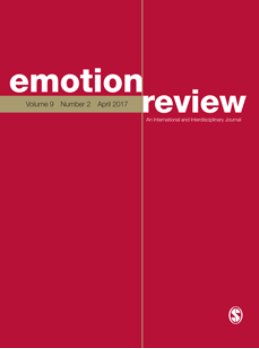Emotion in Nonverbal Communication: Comparing Animal and Human Vocalizations and Human Text Messages
IF 3.4
2区 心理学
Q1 PSYCHOLOGY, MULTIDISCIPLINARY
引用次数: 0
Abstract
Humans and other animals communicate a large quantity of information vocally through nonverbal means. Here, we review the domains of animal vocalizations, human nonverbal vocal communication and computer-mediated communication (CMC), under the common thread of emotion, which, we suggest, connects them as a dimension of all these types of communication. After reviewing the use of emotions across domains, we focus on two concepts that have often been opposed to emotion in the animal versus human communication literature: control and meaning. Non-human vocal communication is commonly described as emotional, preventing either control or meaning; in contrast, the emotional dimension of human nonverbal signals does not prevent them from being perceived as both intentionally produced and meaningful. Amongst others, we disagree with this position, highlighting here that emotions should be integrated across species and modalities such as the written modality. We conclude by delineating ways in which each of these domains can meaningfully influence each other, and debates in their respective fields, and more generally the debate on the evolution of communication.非语言交际中的情感:比较动物和人类的发声和人类的短信
人类和其他动物通过非语言的方式来口头交流大量的信息。在此,我们回顾了动物发声、人类非语言声音交流和计算机媒介交流(CMC)的领域,在情感的共同线索下,我们认为情感将它们作为所有这些类型的交流的一个维度连接起来。在回顾了跨领域情感的使用之后,我们将重点关注在动物与人类交流文献中经常与情感相对立的两个概念:控制和意义。非人类的声音交流通常被描述为情绪化的,既没有控制也没有意义;相比之下,人类非语言信号的情感维度并不妨碍它们被认为是有意产生的和有意义的。除此之外,我们不同意这一立场,在这里强调情感应该跨物种和形式(如书面形式)整合。最后,我们描述了这些领域相互影响的方式,以及各自领域的辩论,更广泛地说,是关于传播进化的辩论。
本文章由计算机程序翻译,如有差异,请以英文原文为准。
求助全文
约1分钟内获得全文
求助全文
来源期刊

Emotion Review
PSYCHOLOGY, MULTIDISCIPLINARY-
CiteScore
6.60
自引率
3.70%
发文量
34
期刊介绍:
Emotion Review is a fully peer reviewed scholarly journal. It adheres to a blinded peer review process in which the reviewer"s name is routinely withheld from the author unless the reviewer requests a preference for their identity to be revealed. All manuscripts are reviewed initially by the Editors and only those papers that meet the scientific and editorial standards of the journal, and fit within the aims and scope of the journal, will be sent for outside review. Emotion Review will focus on ideas about emotion, with "emotion" broadly defined. The Review will publish articles presenting new theories, offering conceptual analyses, reviewing the literature, and debating and critiquing conceptual issues.
 求助内容:
求助内容: 应助结果提醒方式:
应助结果提醒方式:


